Introduction to Ganesh Chaturthi
Ganesh Chaturthi is a major Hindu festival honoring the elephant-headed god of wisdom. Dedicated to Lord Ganesha, the elephant-headed god of wisdom and prosperity, this festival blends faith, joy, and cultural pride. A powerful chorus of “Ganpati Bappa Morya!” , rises and swells through the air. homes are decorated with flowers and lights, and communities come together to honor the beloved deity.
For ten glorious days, Lord Ganesha is welcomed into homes and public pandals with immense devotion. The festival is not just about rituals; it is about unity, creativity, and spirituality. From grand idol processions to mouth-watering sweets, Ganesh Chaturthi captures the true essence of Indian tradition.
The Origins of Ganesh Chaturthi
Mythological Background of Lord Ganesha
The story of Ganesha’s birth is deeply fascinating. Why did Parvati create Ganesha? Mythology says she formed him from sandalwood paste to be her loyal sentinel This led to a fateful confrontation when Lord Shiva arrived and was denied entry. Enraged, Shiva cut off his head. Parvati, devastated, demanded her son be revived. To mend her sorrow, Lord Shiva bestowed upon Ganesha the head of an elephant and the gift of immortality. Since then, he has been worshipped as the remover of obstacles and god of beginnings.
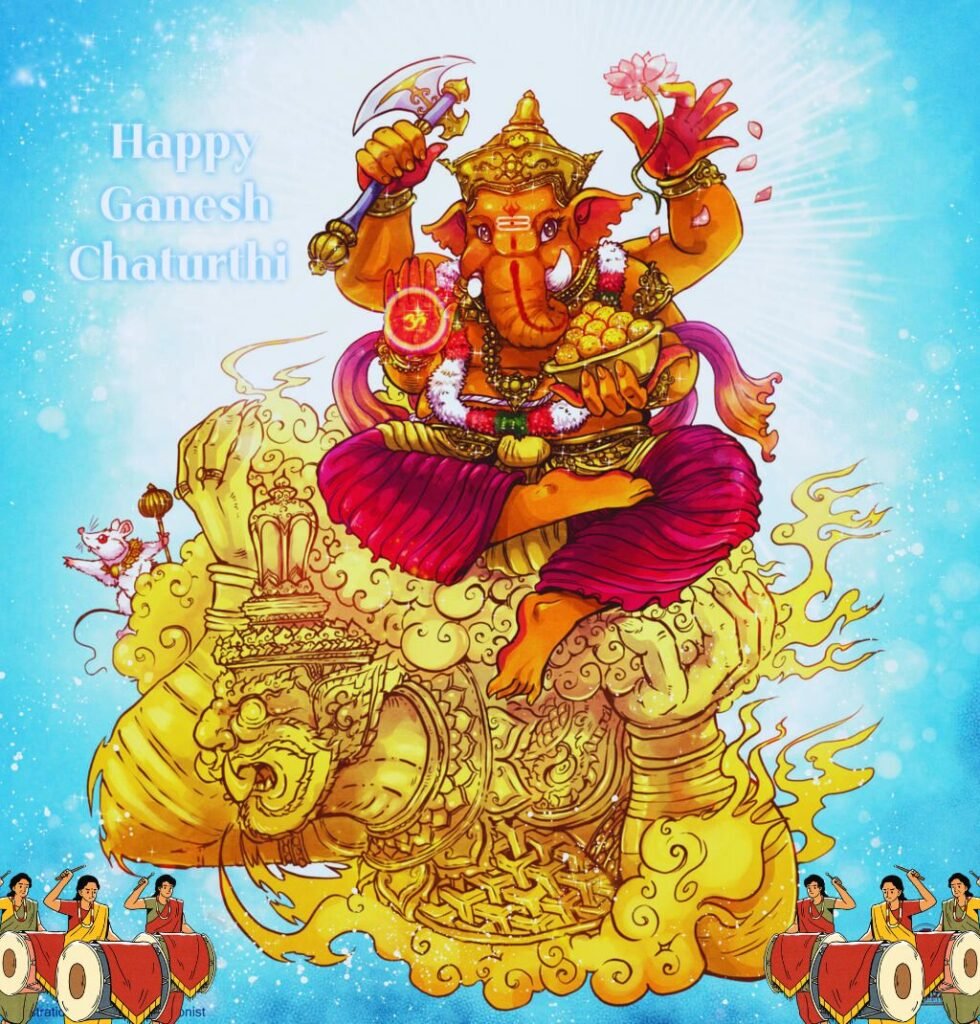
Historical References
Ganesh Chaturthi dates back to the times of the Satavahana, Chalukya, and Rashtrakuta dynasties. Ancient scriptures such as the Matsya Purana and Skanda Purana mention the importance of Ganesha worship. Over time, it became a prominent tradition in western and southern India.
Lokmanya Tilak’s Contribution
Bal Gangadhar Tilak strategically promoted Ganesh Chaturthi as a large-scale public event to foster a spirit of nationalism during the British era. His vision was to unite people beyond caste and class differences. By organizing grand public celebrations, he used the festival as a tool for national unity against colonial power. Today, massive pandals across Maharashtra reflect this legacy.
Importance of Lord Ganesha
Symbolism of Ganesha’s Form
Every feature of Lord Ganesha has meaning:
- His elephant head represents intelligence and wisdom.
- His large ears symbolize patience and the ability to listen.
- His long trunk reflects adaptability.
- The modak in his hand signifies the sweetness of devotion.
- His big belly teaches us to accept all experiences—good and bad.
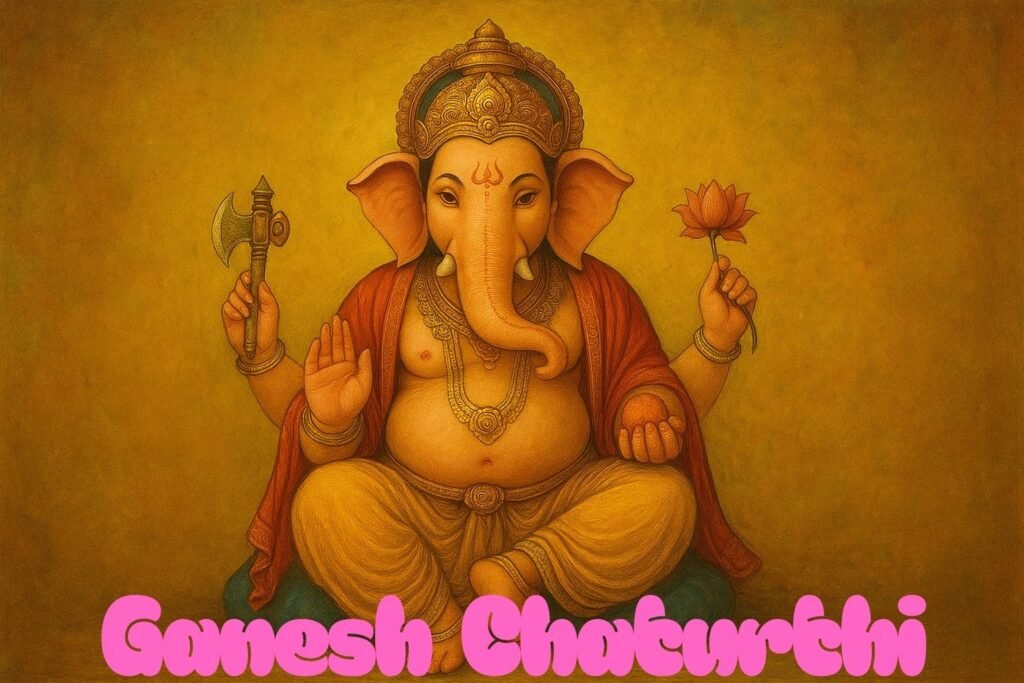
Spiritual Significance
Ganesha is worshipped first in every puja or occasion, from weddings to business openings, because he is Vighnaharta (remover of obstacles). He embodies humility, wisdom, and good fortune, qualities people seek in their daily lives.
When is Ganesh Chaturthi Celebrated?
Ganesh Chaturthi falls in the Hindu month of Bhadrapada (August–September), beginning on the fourth day of the waxing moon. The festival lasts 10 days, ending on Anant Chaturdashi, when the idols are immersed in water.
While Maharashtra is the epicenter, states like Karnataka, Goa, Andhra Pradesh, Telangana, Tamil Nadu, and Gujarat also celebrate the festival with great devotion.
Rituals of Ganesh Chaturthi
Ganesh Idol Installation (Pranapratishtha)
On the first day, idols of Ganesha are installed in homes and public pandals. A priest performs the pranapratishtha ritual, invoking the deity’s presence through mantras.
Daily Offerings and Prayers
Devotees offer flowers, fruits, incense, and sweets while chanting prayers like the Ganesh Aarti. Families gather daily to sing bhajans and share prasadam.
Ganesh Visarjan
On the final day, the idol is taken in a grand procession with drums, dancing, and chants before being immersed in a river, sea, or lake. This symbolizes Ganesha’s return to Mount Kailash and the cycle of life—arrival and departure.
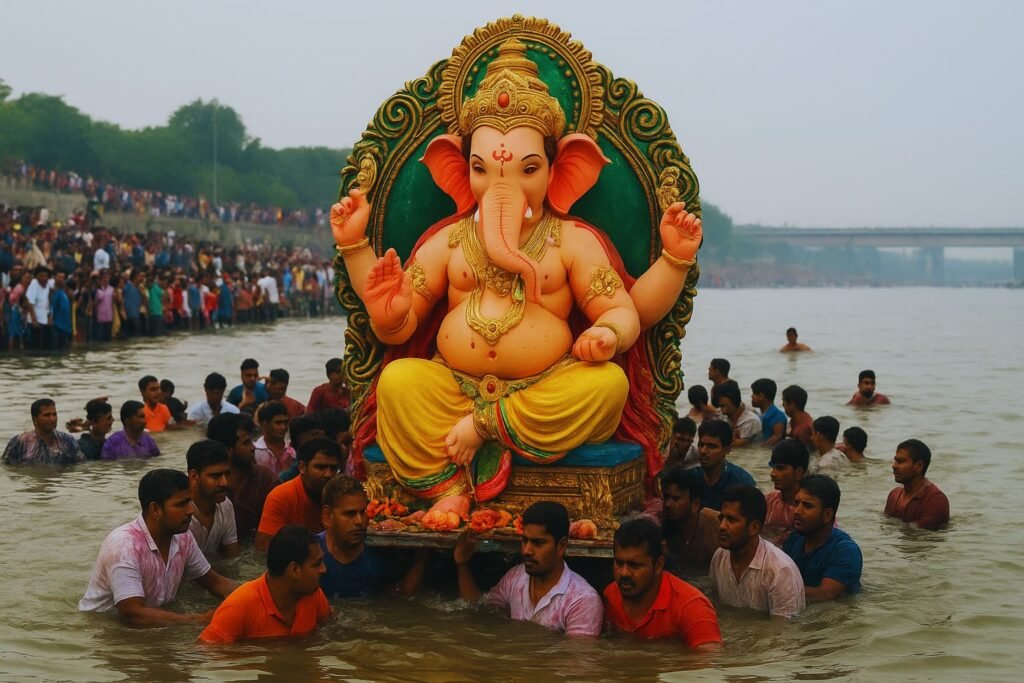
Preparation for Ganesh Chaturthi
Idol Making
The creation of these idols is a labor of love, with artisans spending months crafting everything from small clay figures to colossal statues. Traditionally, idols were made from clay, but many now use eco-friendly materials to protect water bodies.
Decoration of Homes and Pandals
Pandals are decorated with flowers, lights, and themes ranging from mythology to social issues. Families prepare altars at home with fresh flowers, lamps, and colorful rangolis.
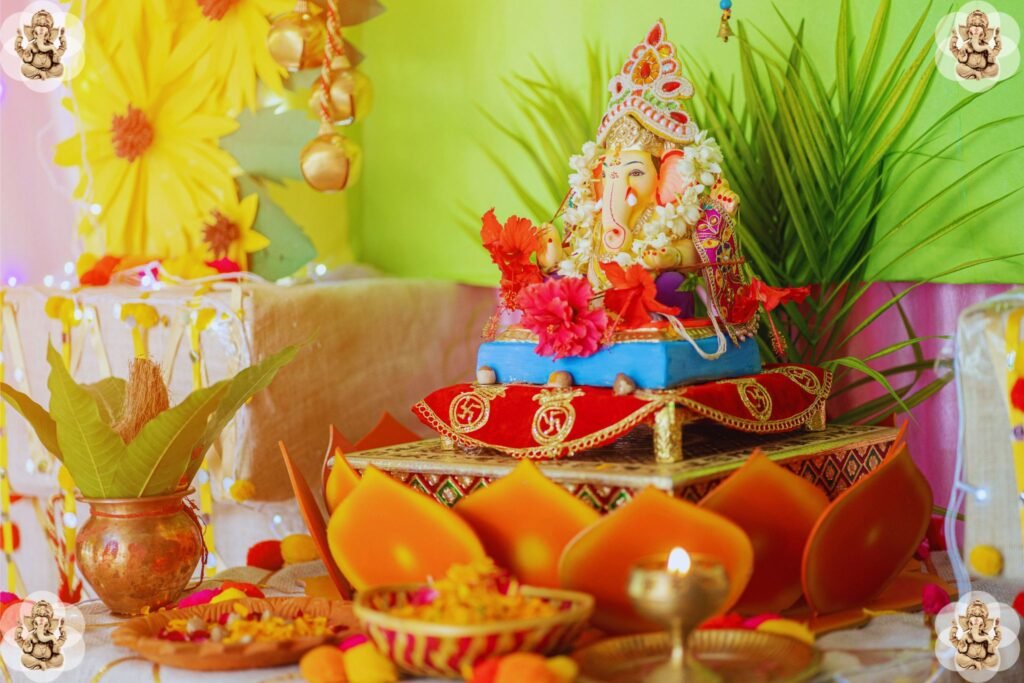
Ganesh Chaturthi Celebrations Across India
Maharashtra
The festival is at its grandest in Maharashtra, especially in Mumbai, Pune, and Nagpur. Famous pandals like Lalbaugcha Raja attract millions of devotees every year.
Southern India
In Karnataka, Andhra Pradesh, and Tamil Nadu, the focus is on traditional rituals, with households preparing sweets and organizing pujas.
Northern and Western India
States like Gujarat and Madhya Pradesh celebrate with local fairs and community gatherings, though on a smaller scale than Maharashtra.
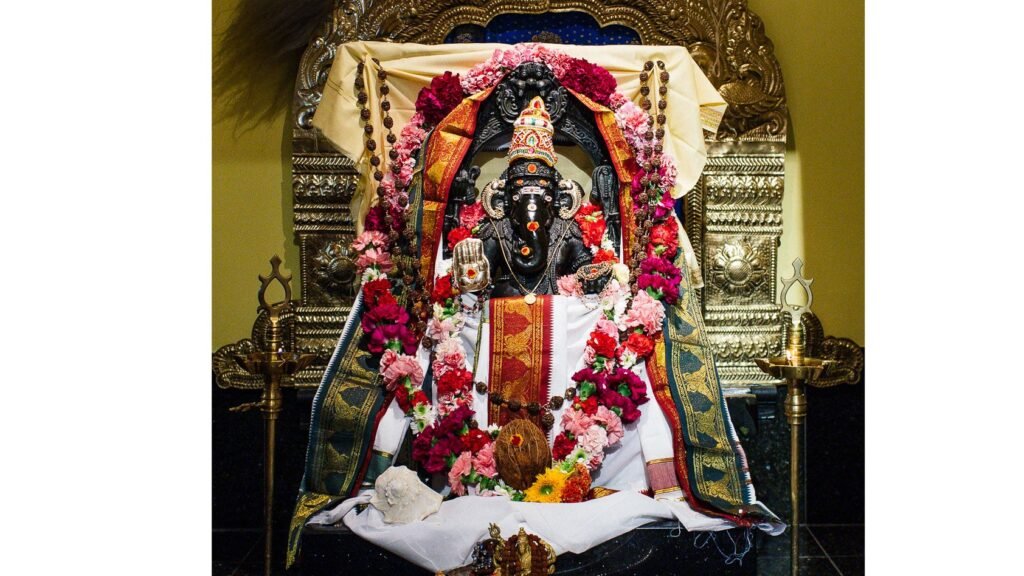
Global Celebrations of Ganesh Chaturthi
With Indian communities living abroad, Ganesh Chaturthi is now a global festival.
- Major celebrations are organized by temples and cultural associations across the United States, Canada, and the United Kingdom.
- In the Middle East, Indian expatriates gather for rituals in private spaces due to restrictions.
- Countries like Mauritius, Fiji, and Singapore also observe the festival with devotion.
Food and Delicacies During Ganesh Chaturthi
Modak: Ganesha’s Favorite
The star of the festival is modak, a dumpling filled with jaggery and coconut. This sweet delicacy is regarded as Lord Ganesha’s most beloved food.
Other Festive Foods
- Puran Poli (sweet flatbread)
- Ladoo varieties
- Karanji (sweet fried dumpling)
These delicacies are prepared with love and offered to Ganesha before being shared with family and neighbors.
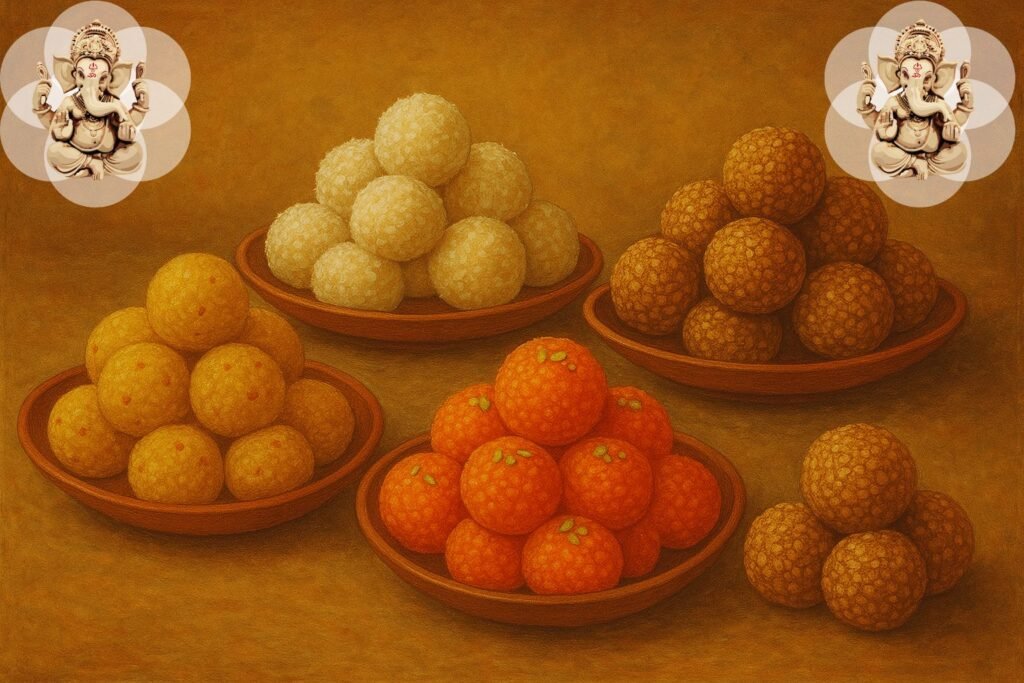
Cultural Impact of Ganesh Chaturthi
Beyond religion, the festival has become a cultural event. Music, dance, plays, and exhibitions are organized during the celebrations. Competitions in rangoli, art, and singing add to the excitement. More importantly, the festival fosters community bonding by bringing together people of all backgrounds.
Economic Importance
The festival is a major economic driver, generating vital income for artisans, florists, confectioners, and decorators. Tourism also thrives during this season, as cities like Mumbai and Pune attract visitors who wish to witness the grandeur of pandals.
Eco-Friendly Ganesh Chaturthi
The Problem
Traditional idols made of Plaster of Paris (PoP) cause water pollution. Chemical paints release toxins harmful to aquatic life.
Sustainable Solutions
- Using clay idols that dissolve naturally.
- Plant-based idols that grow into trees after immersion.
- Community awareness campaigns encouraging green celebrations.
Many organizations and families now actively promote eco-friendly practices to preserve both tradition and the environment.
Spiritual Lessons from Ganesh Chaturthi
The festival teaches timeless values:
- Overcoming obstacles with faith and perseverance.
- Wisdom and humility in daily life.
- Letting go during visarjan, symbolizing detachment from material possessions.
These lessons remind devotees that spirituality is not limited to rituals but extends to everyday living.
Modern Adaptations of the Festival
In today’s digital world, Ganesh Chaturthi has adapted to new times.
- Virtual darshan allows devotees to see idols online.
- Live streaming of aartis helps people abroad stay connected.
- Social media spreads messages of devotion and eco-awareness.
Many idols are now made creatively using chocolates, eco-friendly clay, or recyclable paper, reflecting modern innovation.
Conclusion
Ganesh Chaturthi is more than a festival; it is an emotion that binds people across regions, religions, and communities. It blends devotion, culture, art, and social unity in a way few festivals can. The festival’s true essence isn’t in its grandeur, but in the faith and humility of welcoming and releasing Ganesha.The festival’s true power is in the way it unites millions under one chant:
“Ganpati Bappa Morya! Pudhchya Varshi Lavkar Ya!”
(O Lord Ganesha, come back again next year soon!)
FAQs
1. Why is Ganesh Chaturthi celebrated?
Ganesh Chaturthi celebrates the birth of Lord Ganesha, the revered deity of wisdom and remover of obstacles.
2. Could you explain the events that led to Ganesha having an elephant’s head?
According to mythology, Lord Shiva accidentally beheaded Ganesha and later revived him by attaching an elephant’s head.
3. How many days is Ganesh Chaturthi celebrated?
The celebrations typically span a period of ten days, culminating in the ritual immersion, or visarjan, on the day of Anant Chaturdashi.
4. What is offered to Lord Ganesha during the festival?
Devotees offer modaks, fruits, flowers, and sweets as prasadam to Lord Ganesha.
5. How can Ganesh Chaturthi be celebrated in an eco-friendly way?
By using clay or plant-based idols, avoiding chemical paints, and opting for community immersions in artificial tanks.
Saiyaara Movie Review https://blindspotnews.com/saiyaara-movie/

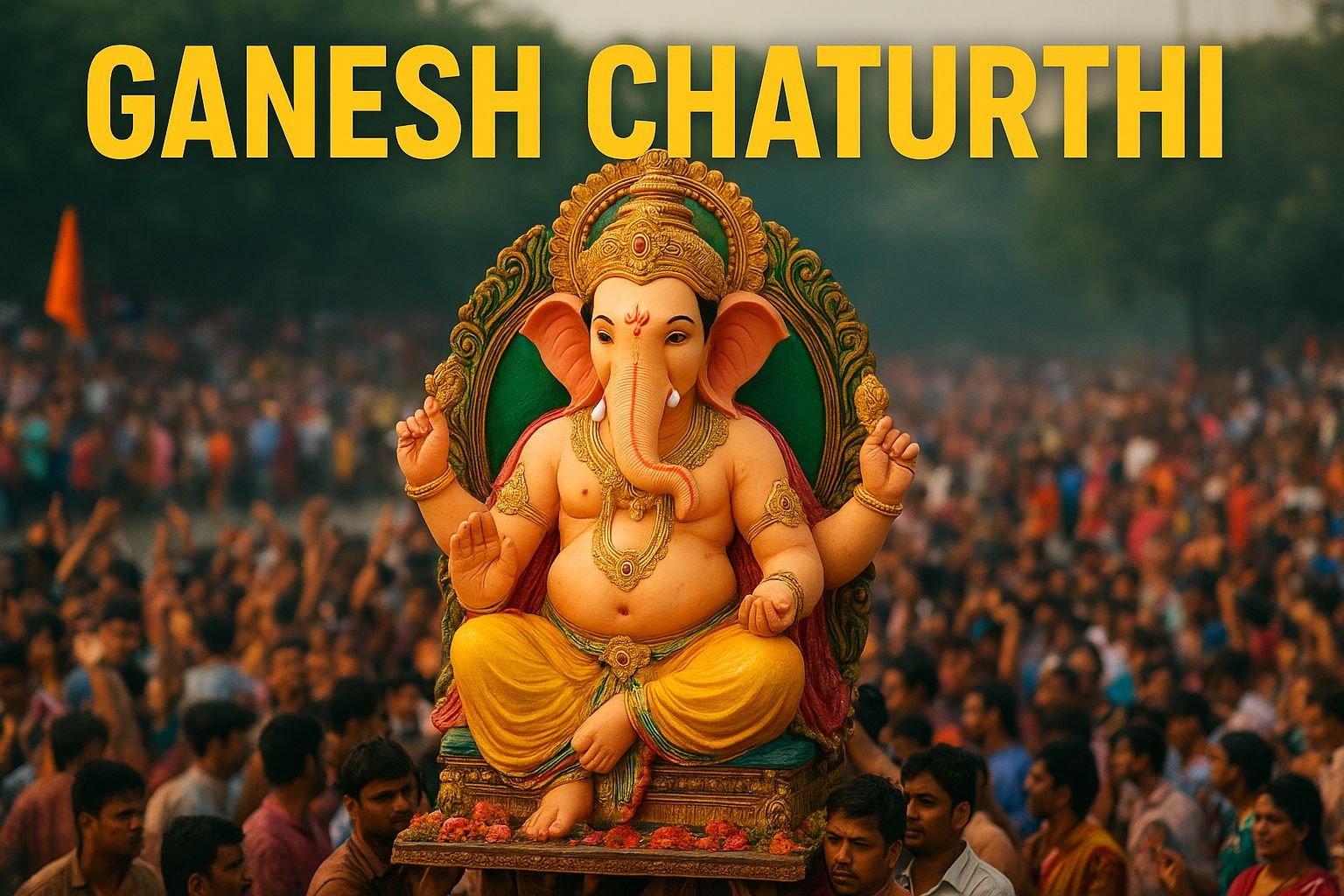
One thought on “Ganesh Chaturthi: A Grand 1st Festival of Devotion, Culture, and Unity”